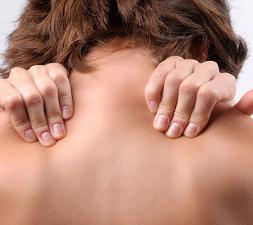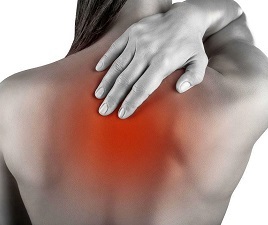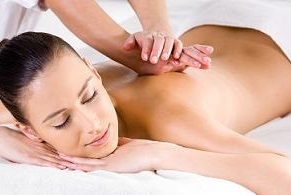
Unlike cervical and lumbar osteochondrosis, thoracic lumbar osteochondrosis is very rare.
Everything has to do with the structure of the chest: there are more discs than the neck and waist, the discs are smaller and thinner. The mobility of this part is generally less, and part of the load is taken up by the ribs and sternum.
Symptoms of thoracic osteochondrosis can be confused with, for example, a heart attack. The reason for this is the nature of the disease.
In this condition, as in cervical or lumbar osteochondrosis, there is no pain during movement and tension, and complications associated with suspected angina pectoris or myocardial infarction or respiratory dysfunction come to the fore.
Reasons
The development of osteochondrosis is further facilitated by hypodynamics - a lack of muscle load, which leads to lack of training of the muscle corset, weakening of its functions and increased load on the ligaments and intervertebral discs.
The following conditions can also cause osteochondrosis:
- Wrong posture and lateral curvature of the spine;
- Bad habits;
- Nervous and physical tension, stress;
- When wearing high heels, overload the waist and lumbar spine during pregnancy and flat feet;
- Back injuries;
- Hypodynamics;
- Heredity;
- Physically hard work.
The intervertebral discs of the thoracic spine are equally badly affected by a sedentary lifestyle and physical activity, which increases the likelihood of injury.
What is the specificity of the sternum?
Everyone knows that the thoracic region is functionally immobile, especially compared to the neck. And the load on him is not so great, relative, for example, to the waist. For this reason, the onset of a disease in the breast rarely occurs with any symptoms in the early stages of development.
The low mobility of the thoracic spine is due to its anatomical features - the connection of the spine with the ribs and sternum is damaged and allows to create a sufficiently mobile and at the same time strong structure, which is less sensitive to external influences.

The relatively low load in this department contributes to the very rare occurrence of any problems in it (for example, vertebral displacement, intervertebral hernia, disc protrusion), which is confirmed by statistics. However, at the same time, nothing unusual can be said about their appearance, for example, poor posture and scoliosis may be some kind of stimulus that causes spinal diseases.
At the same time, the symptoms of such diseases appear very late and are very typical for osteochondrosis - usually compression of the nerve roots, rarely the spinal cord itself is compressed or damaged due to disruption of blood supply, narrowing of blood vessels is possible. and arteries.
Symptoms of thoracic osteochondrosis
Osteochondrosis of the thoracic spine, the symptoms may be completely different, similar to the manifestations of other diseases of the internal organs. Often mistaken for coronary heart disease, cholecystitis, peptic ulcer and even myocardial infarction and pneumonia is thoracic osteochondrosis. This is why the disease is called "chameleon".
Pain-related symptoms:
- The pain is localized under the shoulder blades and can spread to the intercostal nerves. This causes neuralgia. Pain increases when a person takes a breath and moves actively.
- Chest pain is most often localized to the left and resembles coronary heart disease. In this case, it is important to find the cause of pain in time. A thorough examination of the cardiovascular system is required.
Neurological symptoms:
- Numbness or "gas lumps" in the legs, upper chest and abdomen (depending on the affected disc);
- reflex tension in the chest or upper back muscles;
- Especially in advanced cases, it is possible to disrupt the work of the pelvic organs, a decrease in strength in men.
Symptoms of thoracic osteochondrosis, in addition to back and lumbar pain, may be pain in the upper abdomen, heart, liver, gallbladder near the site of osteochondrosis.
It is sometimes possible to misdiagnose the appearance of such pain. Pain in the right side of the chest below the ribs can be confused with inflammation of the gallbladder, in the left side of the chest - it can be confused with a heart attack. It is a mistake to mistake pain in the relevant areas of the abdomen for the manifestation of gastric ulcer or gastritis.
Dorsago
Dorsago is one of the symptoms of osteochondrosis of the sternum, which manifests itself in acute pain. Generally, this symptom occurs in people who sit in a position for a long time or in a restless state, with a monotonous performance of monotonous work.
There may be pain in the spine in the chest, muscles tense and it is often difficult to breathe. Intercostal neuralgia may occur.
Dorsalgia
The ignition cycle will last 2-3 weeks. In this case, the pain gradually increases. Mild pain appears in the affected spine. As a rule, the pain manifests itself especially actively by taking deep breaths and bending forward, backward and sideways.
The nature of dorsalgia pain can be very different. There may be pain, burning, aching, cutting, it may be given under the leg, arm, back, shoulder blade. In terms of localization, the pain is no less different. It can be seen below, above, in the middle, on the right, on the left, between the shoulder blades.
Treatment of thoracic osteochondrosis
X-ray diagnostic information helps in developing a treatment plan that determines how to treat osteochondrosis of the thoracic region. Such an examination gives a clear idea of how to treat thoracic osteochondrosis, because X-ray readings showing the growth of vertebral bodies and changes in the intervertebral distance (decrease in height) are a characteristic feature of this disease.
Treatment of osteochondrosis of the thoracic spine depends on the stage of the disease and is mainly carried out conservative therapy. Surgery is extremely rare in the case of a spinal hernia.
Medication
Drug treatment is based on the following principles:
- The use of a special drug that allows fluid to be stored inside the intervertebral disc.
- Vitamins. Often prescribed complete vitamin complexes or preparations with B group elements
- Antispasmodics and muscle relaxants that reduce the spasm of the muscles around the spine.
- Painkillers. NSAIDs and analgesics based on drug compounds.
- Chondroprotectors. It is important to catalyze the process of repairing damaged cartilage.
After the elimination of acute events, massage the muscles of the back and lower extremities. In case of development of functional blockages, manual therapy is indicated for osteochondrosis of 1-3 degrees. Contains a variety of options for soft and rough effects on the back muscles.
The duration of treatment for thoracic osteochondrosis depends on the severity of the disease and the degree of age-related changes, as well as the patient's efforts to follow the instructions of the attending physician.
Gymnastics for thoracic osteochondrosis
Patients with thoracic lumbar osteochondrosis are prescribed therapeutic exercises to increase the mobility of the costal-vertebral and intervertebral joints. Sports therapy (provided it is performed regularly and correctly) allows you to eliminate even the most intense muscle spasms. Moderate physical activity will help relieve stiffness in the spine caused by a weak muscular corset.
Daily sessions supervised by an experienced instructor will have a beneficial effect on the whole body in general and the bronchopulmonary system in particular. Patients improved pulmonary ventilation and were able to breathe deeply and exhale painlessly.
Massage

Massage not only reduces the severity of the symptoms of the disease, but also helps the person to recover, the efforts have a positive effect on other elements of complex therapy.
Thoracic lumbar osteochondrosis is determined individually based on the clinical manifestations, the presence of chronic diseases and contraindications.
Manual therapy
Manual therapy is used to restore muscle mobility and spasm, as well as to restore back mobility. Thanks to manual therapy, it is possible to release blood vessels, improve nutrition and oxygen supply to the tissues of the intervertebral discs.
Correct position during rest and sleep
During the prevention and treatment of osteochondrosis, it is necessary to establish the correct position at rest and sleep. It is better to sleep in an even and firm bed, but do not be a fanatic, if the bed does not meet the requirements, it is not recommended to sleep on the floor, so you can catch a cold. This measure is very important for the rapid restoration of the normal shape of the spine.
However, at first, there may be a very strong painful sensation that lasts until the vertebrae take a physiological position. You can place a roller under the affected area to relieve pain and discomfort.
Exercises
The most effective treatment for muscle spasm is physical therapy. Relax with well-chosen exercises and at the same time strengthen and train your back muscles. As a result, the thoracic spine stabilizes and the suffocated spinal nerves are released.

A set of exercises for thoracic osteochondrosis is performed as follows:
- Starting position - stand up straight while breathing, legs together, arms down. Raise your arms - breathe in, then bend back - take a deep breath. Lower your arms, bend forward and roll your back, and lower your shoulders and head - breathe. Repeat 8 to 10 times.
- Starting position - sitting in a chair. Slowly put your hands behind your head - inhale, lean back 5 times with your shoulder blades on the back of a chair - exhale.
- The starting position is to stand on all fours and bend your back as much as possible, stand for 3 seconds, and keep your head straight. Repeat 5 - 7.
- Starting position - comfortable to lie on your stomach and put your hands on the floor. At the same time, try to bend back and pull the body off the ground. Repeat 5 - 8.
- Starting position - lying on your stomach with arms stretched across the body. Bend at the chest, trying to lift your head and legs as much as possible. Repeat 5 - 8.
If you follow all the doctor's prescriptions, you can achieve a slow but sure improvement.
Prevention
May damage the health of the thoracic and other parts of the spine:
- long static loads (sitting in front of the TV, computer);
- lift weights;
- confusing habit;
- hypothermia and frequent colds.
Office workers need to change their body positions, get up and exercise more often due to their job responsibilities. Simple stretching is so helpful.



































